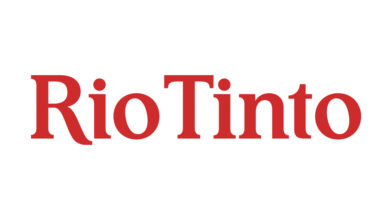Global Pea Protein Ingredient Market Report 2020: Industry Analysis, Growth Trends and Market Forecast 2017-2020 & 2021-2025 – ResearchAndMarkets.com

DUBLIN–(BUSINESS WIRE)–The “Pea Protein Ingredient Market – Global Industry Analysis (2017-2020). Growth Trends and Market Forecast (2021-2025)” report has been added to ResearchAndMarkets.com’s offering.
The market is expected to show favourable growth during the forecast period, reaching US$ 1,374.3 million in 2020. In the next five years, the market is expected to register a CAGR 8.4%. The global pea protein market is expected to flourish owing to multifunctional properties of pea protein.
This latest market research report on global pea protein market discusses the changes in the global diet. The growing popularity of veganism in the West and awareness of environmental impact of meat consumption are expected to play a critical role in shaping the market. The research report highlights key drivers, restraints and potential threats to the pea protein market globally.
According to analysts, increased preference of convenience food products is likely to be the key driver. Pea protein is gaining wide popularity as it provides a healthy alternative to lactose intolerant consumers, vegetarians and vegans. Heated conversations around healthy lifestyle choices and conscious consumption are boosting the demand for nutrient-rich protein alternative. Pea protein is also being widely consumed as it can be easily absorbed and digested in the body. The market is increasingly substituting meat industry as it provides simple storage options and has lower processing cost.
The dry segment is expected to lead the global market. The pea flour extracted in the form of powder is dry pea protein. The dry pea protein is known to be more sustainable compared to the conventional protein sources therefore, providing enhanced functionality by increasing its range of applications.
Europe is expected to dominate the global market during the forecast period. This dominance will be due to large scale consumption and production of plant based products. Furthermore, shift of consumer preference towards veganism will also drive the regional market. The growth of this regional market will also be attributable to the awareness about benefits of pea protein. This has also led manufacturers in this region to comply with the EU standards regarding non-GMO products. These factors are likely to boost the demand for market in this region.
The key players are investing in research and development activities to expand and improvise their product portfolio. This will create dominance and increase competition in the market. They are actively investing in research and development activities along with focusing on mergers and acquisitions to stay ahead in the competition.
Key Highlights
- Rising popularity of convenient food to accelerate demand for pea protein
- Higher awareness among consumers about healthy life choices to boost demand for pea protein
- Dry pea protein to flourish as it is more sustainable compared to conventional pea protein
- Europe likely to dominate the global market as this region has large consumer base with growing popularity of veganism
- Key players to actively focus on investing in research and development activities
The key players operating in the global pea protein market are
- Axiom Foods
- Burcon NutraScience Corporation
- Cosucra Groupe Warcoing SA Group
- DuPont de Nemours, Inc
- Emsland Group
- Glanbia plc
- Ingredion Incorporated
- PURIS
- Roquette Group
- The Scoular Company
Key Topics Covered:
1. Executive Summary
1.1. Global Pea Protein Ingredient Market Snapshot
1.2. Future Projections
1.3. Key Market Trends
1.4. Analyst Recommendations
2. Market Overview
2.1. Market Definitions and Segmentations
2.2. Market Dynamics
2.2.1. Drivers
2.2.2. Restraints
2.2.3. Market Opportunities
2.3. Value Chain Analysis
2.4. Porter’s Five Forces Analysis
2.5. Covid-19 Impact Analysis
2.6. Economic Overview
2.7. Key Developments
2.8. Key Regulations
2.9. Key Patents
3. Global Pea Protein Ingredient Market Outlook, 2017-2025
3.1. Global Pea Protein Ingredient Market Outlook, by Nature, Volume (Tons) and Value (US$ Mn), 2017-2025
3.1.1. Key Highlights
3.1.1.1. Organic
3.1.1.2. Conventional
3.1.2. BPS Analysis/Market Attractiveness Analysis
3.2. Global Pea Protein Ingredient Market Outlook, by Format, Volume (Tons) and Value (US$ Mn), 2017-2025
3.2.1. Key Highlights
3.2.1.1. Isolate
3.2.1.2. Concentrate
3.2.1.3. Hydrolysate
3.2.2. BPS Analysis/Market Attractiveness Analysis
3.3. Global Pea Protein Ingredient Market Outlook, by Application, Volume (Tons) and Value (US$ Mn), 2017-2025
3.3.1. Key Highlights
3.3.1.1. Food & Beverages
3.3.1.1.1. Cereals & Snacks
3.3.1.1.2. Meat Substitute
3.3.1.1.3. Bakery & Confectionery
3.3.1.1.4. Performance Nutrition
3.3.1.1.5. Beverage & Desserts
3.3.1.2. Animal & Pet Food
3.3.1.3. Pharmaceutical & Dietary Supplements
3.3.1.4. Cosmetics
3.3.2. BPS Analysis/Market Attractiveness Analysis
3.4. Global Pea Protein Ingredient Market Outlook, by Region, Volume (Tons) and Value (US$ Mn), 2017-2025
3.4.1. Key Highlights
3.4.2. BPS Analysis/Market Attractiveness Analysis
4. North America Pea Protein Ingredient Market Outlook, 2017-2025
5. Europe Pea Protein Ingredient Market Outlook, 2017-2025
6. Asia Pacific Pea Protein Ingredient Market Outlook, 2017-2025
7. Latin America Pea Protein Ingredient Market Outlook, 2017-2025
8. Middle East & Africa Pea Protein Ingredient Market Outlook, 2017-2025
9. Competitive Landscape
9.1. Company Market Share Analysis, 2019
9.2. Product Heatmap
9.3. Company Profiles
9.3.1. Company Overview
9.3.2. Regional Presence & Revenue
9.3.3. Business Segment Revenue
9.3.4. Product Portfolio
For more information about this report visit https://www.researchandmarkets.com/r/yvgs31
Contacts
ResearchAndMarkets.com
Laura Wood, Senior Press Manager
[email protected]
For E.S.T Office Hours Call 1-917-300-0470
For U.S./CAN Toll Free Call 1-800-526-8630
For GMT Office Hours Call +353-1-416-8900




